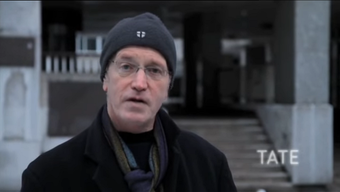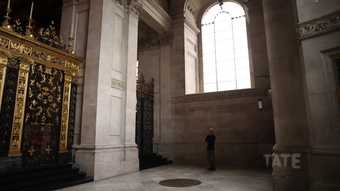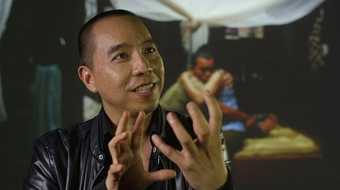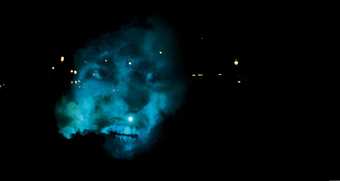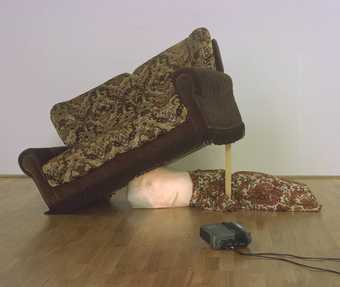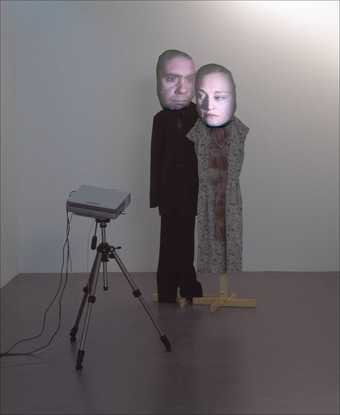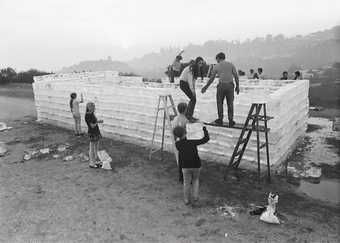As a video artist, as a moving image maker, there really is no art history for anybody to study and I wanted to kind of fill in these, what I call a 'shadow history' of the moving image, of virtual image production and I started with the Camera Obscura and ended up with the internet.
It's been 13 years since The Influence Machine was in Soho Square and I'm excited to see what happens here with it. The situation changes because now we have it here over at the Tate and we've got different surfaces we are working with, a different crew, a different atmosphere and different architecture.
It randomly recombines all the video and sound elements, so it's always a little bit different every time it's shown.
The influence machine is broken up into a number of elements – there are certain characters that flow around the vegetation, the landscape, the trees – it's almost like, imagine a spotlight in a theatre, but it's actually a video projection so the image crawls around the landscape so that people can walk through the park and experience the influence machine.
I spent about two years doing research into the deep history of the virtual image going all the way back thousands of years to the first uses of the Camera Obscura. I was looking at what I call twilight moments in the inception of any new technology – so when the telegraph, photography, film, television, the internet – right when they were first invented, people kind of have no idea what could be done with them, anything could happen.
I was looking at those moments and I stumbled on spirit photography, which I was kind of partial to, as a metaphor for the alternative uses of technology. Then I looked at all these other mediums and I thought well, you know, had people used film, had people used television, had people used the computer to try to communicate with the dead and of course they had, and so I thought okay this is my linking structure for the influence machine and that's how I was able to complete the piece.

